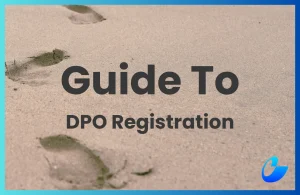Formed without a specific agreement, conventional partnerships in Malaysia are governed by default provisions in the Partnership Act 1961.

As the Act alone almost never truly reflects partners’ intentions, a Partnership Agreement should be a priority for parties keen to protect their interests, clarify roles, and avoid disputes.
In this guide, we explain:
- what a Partnership Agreement is
- why it matters, and
- key clauses to include
Let’s begin.
What is a Partnership Agreement?
A Partnership Agreement is a legally binding contract between two or more individuals or entities who agree to do business together with a view to profit.
A typical agreement outlines:
- each partner’s roles and responsibilities
- capital contributions
- profit-sharing arrangements
- how decisions are made, and
- what happens when a partner leaves
Of course, the agreement can be tailored to the specific needs of the partners, with additional clauses included as necessary.
The importance of a Partnership Agreement
Regardless of the relationship between the potential business partners, a written agreement provides a layer of protection in the form of:
- Clarity: Defines roles, expectations, and contributions clearly.
- Dispute avoidance: Reduces the chances of arguments over money.
- Exit strategy: What happens if a partner resigns, retires, or passes away.
- Legal protection: Covers situations not covered by the Partnership Act.
- Customisation: Tailor the agreement to your business model.
We regularly advise clients who come to us after a partnership has gone wrong, at which point much of the damage cannot be undone.
Common issues include unclear profit shares, partners suddenly leaving, and deadlocks with no resolution, all of which are easily prevented with a written agreement.
Key clauses
A good Partnership Agreement should cover at least the following clauses:
| Clause | Description |
| Business Scope | Defines the nature and activities of the partnership. |
| Capital Contributions | States each partner’s input (cash, assets, expertise) and ownership share. |
| Profit and Loss Sharing | Explains how profits and losses are divided among partners. |
| Management and Decision-Making | Outlines how decisions are made—unanimously or by majority. |
| Partner Duties and Restrictions | Lists partner roles and any limits (e.g. no competing businesses). |
| Admission and Retirement of Partners | Covers adding new partners and exit terms (voluntary, death, or expulsion). |
| Accounts and Financial Matters | Covers capital/income accounts, salaries, drawings, and bank matters. |
| Restrictions on Transfer of Interests | Details rules on transferring interest and confidentiality. |
| Dispute Resolution | Sets out how disputes are resolved (mediation, arbitration, court). |
| Dissolution | Explains how to end the partnership and handle assets/liabilities. |
| Governing Law | Specifies the applicable legal jurisdiction. |
Consider beginning with an MOU
Very briefly, a Memorandum of Understanding (MOU) is a generally non-binding legal document between parties to document intentions, key terms, and expectations as a precursor to a more detailed contract.
However, if all parties so wish, specific clauses in an MOU can be made binding, striking a balance between flexibility and commitment.
For that reason, we advise clients in early-stage discussions to begin with an MOU instead of a fully binding Partnership Agreement.
The best agreements are tailored
After years of handling partner disputes caused by missing or unclear terms, we’ve seen firsthand where things can go wrong and can help you avoid them.

Get in touch with us if you plan to start a partnership or formalise an existing one. A well-drafted Partnership Agreement is the best insurance policy you can get for your partnership.










